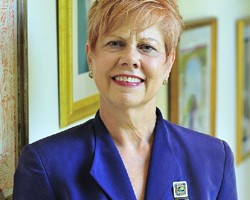YOUR FINANCIAL FUTURE / It’s financial resolution time! / Part 1
By Roxanne Fleszar
Yes, a new year is upon us once again…a time for cheer and merriment but also an opportunity to look back on the previous year and a decision to make some positive changes in your financial affairs in 2016.
Let’s start out with a review of your cash flow. How much income are bringing in and what is going out in expenses? This clearly means an assessment of wants and needs. Needs are the basics in life; food, shelter, insurance to cover current health issues or unexpected events, and is this day and age a means of communication, i.e. a phone and/or computing device. Unless you are retired, or you work from a home office, you also need to have transportation to your work environment. Literally every other expense is a want.
I want the iPhone 6s; I want a Coach bag; I want a pair of Primo Luna sneakers; I want a MacBook Pro; …the list is infinite. Or perhaps you want a house that you really can’t afford. Many these items are hot, they give you cache. But will they provide you with a better life over the long term or will they destroy your future life?
If you are charging items on your credit because you don’t have the cash to cover them, STOP.
According to a recent Harris Poll for NerdWallet, the average US household is carrying $15,355 in credit card debt, and they are paying over $6,600 in interest expenses annually. Wow.
If you cannot pay off your credit card bills in 30 days, you aren’t just spending too much, you are making a commitment to pay in the future for items you consume today!
And what of the interest expense? As I have mentioned in past articles, the compounding of interest in an investment account creates wealth. Unpaid credit card balances destroy wealth. Let’s take an example of a $5,000 credit card balance with a 15% annual interest rate that compounds monthly. If you make a minimum payment of $66 per month it takes over 18 years to pay off the balance and you will have paid $9,545 in interest. Doubling the payment to $132 per month brings the interest payment down to $1,699 and you will have paid off the balance in 4.25 years. Clearly saving more to pay down debt makes great sense.
Look for ways to reduce expenses. Review the large expenses first; can you refinance your student loans, mortgage or consolidate debt through a personal loan? Can you get by without a car and use public transportation or ride a bike instead? You will save a lot…you won’t have car insurance, maintenance, fuel expenses in addition to the cost of the vehicle to contend with.
Look to the many smaller expenses you incur on an ongoing basis next. How about reviewing your cable bill and getting rid of channels you don’t watch or moving to a streaming service such as Netflix, Hulu Plus or Amazon Prime? Could you use the library instead of buying books and DVD’s? What about bagging your lunch? Reducing your restaurant expenditures by cooking dinner more often? Making your coffee at home instead of going to your favorite coffee bar? Coloring your own hair?
Any additional funds you can use to pay down debt will benefit your long-term financial picture. To can input your own credit card balances to see how a higher payment can reduce your interest expense go to www.moneychimp.com/features/debt_payment_calulator.htm.
Roxanne E. Fleszar, CFP, ChFC is President of Financial Resources Management Corp, a registered investment advisory firm with offices in Key West, Boston and Naples
[livemarket market_name="KONK Life LiveMarket" limit=3 category=“” show_signup=0 show_more=0]


No Comment